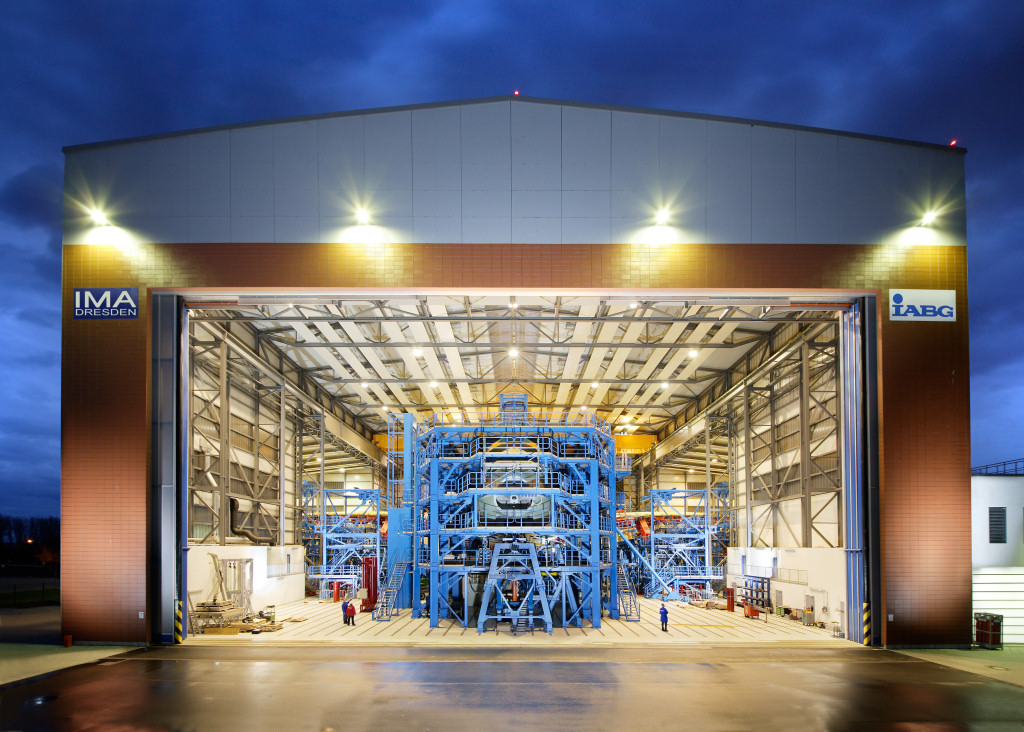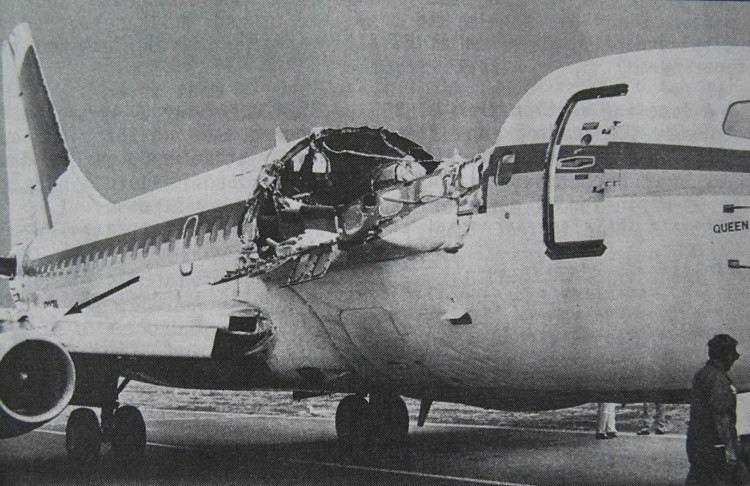|
Fatigue Testing
Fatigue testing is a specialised form of mechanical testing that is performed by applying cyclic loading to a ''coupon'' or structure. These tests are used either to generate fatigue life and crack growth data, identify critical locations or demonstrate the safety of a structure that may be susceptible to fatigue. Fatigue tests are used on a range of components from coupons through to full size test articles such as automobiles and aircraft. Fatigue tests on coupons are typically conducted using servo hydraulic test machines which are capable of applying large ''variable amplitude'' cyclic loads. ''Constant amplitude'' testing can also be applied by simpler oscillating machines. The ''fatigue life'' of a coupon is the number of cycles it takes to break the coupon. This data can be used for creating stress-life or strain-life curves. The rate of crack growth in a coupon can also be measured, either during the test or afterward using fractography. Testing of coupons can also be ... [...More Info...] [...Related Items...] OR: [Wikipedia] [Google] [Baidu] [Amazon] |
IABG Test Setup A380 Dresden Bent Wing
IABG (Industrieanlagen-Betriebsgesellschaft mbH) is a German analysis and test engineering company based in Taufkirchen near Munich Munich is the capital and most populous city of Bavaria, Germany. As of 30 November 2024, its population was 1,604,384, making it the third-largest city in Germany after Berlin and Hamburg. Munich is the largest city in Germany that is no .... History The company was founded in 1961 on the initiative of the federal government as a central analysis and testing facility for the Federal Ministry of Defence (Germany), Federal Ministry of Defence and the aeronautical industry. In 1993, the company was privatized and is now run by its owners. Up to January 1 of 2010, SCHWARZ Holding GmbH (87.4% of the share capital) together with IABG Mitarbeiterbeteiligungs AG (MBAG, 12.6% of the share capital) form the IABG shareholder group. In 2019 IABG employed around 1,000 employees at 12 German and international locations. ;Projects In 1993, IABG starte ... [...More Info...] [...Related Items...] OR: [Wikipedia] [Google] [Baidu] [Amazon] |
Federal Aviation Regulations
The Federal Aviation Regulations (FARs) are rules prescribed by the Federal Aviation Administration (FAA) governing all aviation activities in the United States. The FARs comprise Title 14 of the Code of Federal Regulations (14 CFR). A wide variety of activities are regulated, such as aircraft design and maintenance, typical airline flights, pilot training activities, hot-air ballooning, lighter-than-air aircraft, human-made structure heights, obstruction lighting and marking, model rocket launches, commercial space operations, model aircraft operations, unmanned aircraft systems (UAS) and kite flying. The rules are designed to promote safe aviation, protecting pilots, flight attendants, passengers and the general public from unnecessary risk. FAR vs. 14 CFR Since 1958, these rules have typically been referred to as "FARs", short for Federal Aviation Regulations. However, another set of regulations (Title 48) is titled "Federal Acquisition Regulations", and this has led ... [...More Info...] [...Related Items...] OR: [Wikipedia] [Google] [Baidu] [Amazon] |
Widespread Fatigue Damage
Widespread fatigue damage (WFD) in a structure is characterised by the simultaneous presence of fatigue cracks at multiple points that are of sufficient size and density that while individually they may be acceptable, link-up of the cracks could suddenly occur and the structure could fail. For example, small fatigue cracks developing along a row of fastener holes can coalesce increasing the stress on adjacent cracked sites increasing the rate of growth of those cracks. The objective of a designer is to determine when large numbers of small cracks could degrade the joint strength to an unacceptable level."Federal Register, Aging aeroplane program" The in-flight loss of part of the fuselage from Aloha Airlines Flight 243 Aloha Airlines Flight 243 (IATA: AQ243, ICAO: AAH243) was a scheduled Aloha Airlines flight between Hilo International Airport, Hilo and Honolulu International Airport, Honolulu in Hawaii. On April 28, 1988, a Boeing 737-209, Boeing 737-297 servi ... was attribute ... [...More Info...] [...Related Items...] OR: [Wikipedia] [Google] [Baidu] [Amazon] |
Boeing Everett 16
The Boeing Company, or simply Boeing (), is an American multinational corporation that designs, manufactures, and sells airplanes, rotorcraft, rockets, satellites, and missiles worldwide. The company also provides leasing and product support services. Boeing is among the largest global aerospace manufacturers; it is the fourth-largest defense contractor in the world based on 2022 revenue and is the largest exporter in the United States by dollar value. Boeing was founded by William E. Boeing in Seattle, Washington, on July 15, 1916. The present corporation is the result of the merger of Boeing with McDonnell Douglas on August 1, 1997. As of 2023, the Boeing Company's corporate headquarters is located in the Crystal City neighborhood of Arlington County, Virginia. The company is organized into three primary divisions: Boeing Commercial Airplanes (BCA), Boeing Defense, Space & Security (BDS), and Boeing Global Services (BGS). In 2021, Boeing recorded $62.3billion in sales. Boei ... [...More Info...] [...Related Items...] OR: [Wikipedia] [Google] [Baidu] [Amazon] |
Optical Microscope
The optical microscope, also referred to as a light microscope, is a type of microscope that commonly uses visible light and a system of lenses to generate magnified images of small objects. Optical microscopes are the oldest design of microscope and were possibly invented in their present compound form in the 17th century. Basic optical microscopes can be very simple, although many complex designs aim to improve resolution and sample contrast. The object is placed on a stage and may be directly viewed through one or two eyepieces on the microscope. In high-power microscopes, both eyepieces typically show the same image, but with a stereo microscope, slightly different images are used to create a 3-D effect. A camera is typically used to capture the image (micrograph). The sample can be lit in a variety of ways. Transparent objects can be lit from below and solid objects can be lit with light coming through ( bright field) or around ( dark field) the objective lens. Polar ... [...More Info...] [...Related Items...] OR: [Wikipedia] [Google] [Baidu] [Amazon] |
Crack Closure
Crack closure is a phenomenon in fatigue loading, where the opposing faces of a crack remain in contact even with an external load acting on the material. As the load is increased, a critical value will be reached at which time the crack becomes ''open''. Crack closure occurs from the presence of material propping open the crack faces and can arise from many sources including plastic deformation or phase transformation during crack propagation, corrosion of crack surfaces, presence of fluids in the crack, or roughness at cracked surfaces. Description During cyclic loading, a crack will open and close causing the crack tip opening displacement (CTOD) to vary cyclically in phase with the applied force. If the loading cycle includes a period of negative force or stress ratio R (i.e. R < 0), the CTOD will remain equal to zero as the crack faces are pressed together. However, it was discovered that the CTOD can also be zero at other times even when the applied force is positi ... [...More Info...] [...Related Items...] OR: [Wikipedia] [Google] [Baidu] [Amazon] |
Stiffness
Stiffness is the extent to which an object resists deformation in response to an applied force. The complementary concept is flexibility or pliability: the more flexible an object is, the less stiff it is. Calculations The stiffness, k, of a body is a measure of the resistance offered by an elastic body to deformation. For an elastic body with a single degree of freedom (DOF) (for example, stretching or compression of a rod), the stiffness is defined as k = \frac where, * F is the force on the body * \delta is the displacement produced by the force along the same degree of freedom (for instance, the change in length of a stretched spring) Stiffness is usually defined under quasi-static conditions, but sometimes under dynamic loading. In the International System of Units, stiffness is typically measured in newtons per meter (N/m). In Imperial units, stiffness is typically measured in pounds (lbs) per inch. Generally speaking, deflections (or motions) of an infinitesima ... [...More Info...] [...Related Items...] OR: [Wikipedia] [Google] [Baidu] [Amazon] |
Crack Tip Opening Displacement
Crack tip opening displacement (CTOD) or \delta_\text is the distance between the opposite faces of a crack tip at the 90° intercept position. The position behind the crack tip at which the distance is measured is arbitrary but commonly used is the point where two 45° lines, starting at the crack tip, intersect the crack faces. The parameter is used in fracture mechanics to characterize the loading on a crack and can be related to other crack tip loading parameters such as the stress intensity factor K and the elastic-plastic J-integral. For plane stress conditions, the CTOD can be written as: \delta_\text = \left(\frac\right)\ln\left sec\left(\frac\right)\right/math> where \sigma_\text is the yield stress, a is the crack length, E is the Young's modulus, and \sigma^\infty is the remote applied stress. Under fatigue loading, the range of movement of the crack tip during a loading cycle \Delta\delta_\text can be used for determining the rate of fatigue growth using a crack ... [...More Info...] [...Related Items...] OR: [Wikipedia] [Google] [Baidu] [Amazon] |
Extensometer
An extensometer is a device that is used to measure changes in the length of an object. It is useful for stress- strain measurements and tensile tests. Its name comes from "extension-meter". It was invented by Charles Huston who described it in an article in the ''Journal of the Franklin Institute'' in 1879. Huston later gave the rights to Fairbanks & Ewing, a major manufacturer of testing machines and scales. Types There are two main types of extensometers: ''contact'' and ''non-contact''. Contact ''Contact extensometers'' have been used for many years and are also subdivided into two further categories. The first type of contact extensometer is called a ''clip-on'' extensometer. These devices are used for applications where high precision strain measurement is required (most ASTM based tests). They come in many configurations and can measure displacements from very small to relatively large (less than a mm to over 100 mm). They have the advantage of lower cost and e ... [...More Info...] [...Related Items...] OR: [Wikipedia] [Google] [Baidu] [Amazon] |
Compact Tension Specimen
A compact tension specimen (CT) is a type of standard notched specimen in accordance with ASTMASTM E647-00 ''Standard Test Method for Measurement of Fatigue Crack Growth Rates''. ASTM International, 2000. and ISOISO 7539-6 ''Corrosion of metals and alloys - Stress corrosion testing - Part 6: Preparation and use of pre-cracked specimens for tests under constant load or constant displacement''. 2nd Ed. 2003. standards. Compact tension specimens are used extensively in the area of fracture mechanics and corrosion testing, in order to establish fracture toughness and fatigue crack growth data for a material. The purpose of using a notched sample is to create a fatigue crack by applying cyclic loading through pins inserted into the holes on the sample using a laboratory fatigue test machine. The fatigue crack will begin on the point of the notch and extend through the sample. The length of the crack is typically monitored by measuring the compliance of the coupon which changes as th ... [...More Info...] [...Related Items...] OR: [Wikipedia] [Google] [Baidu] [Amazon] |
ASTM International
ASTM International, formerly known as American Society for Testing and Materials, is a standards organization that develops and publishes voluntary consensus technical international standards for a wide range of materials, products, systems and services. Some 12,575 apply globally. The headquarters is in West Conshohocken, Pennsylvania, about northwest of Philadelphia. It was founded in 1902 as the American Section of the International Association for Testing Materials. In addition to its traditional standards work, ASTM operates several global initiatives advancing additive manufacturing, advanced manufacturing, and emerging technologies, including the Additive Manufacturing Center of Excellence (AM CoE), the acquisition oWohlers Associatesfor market intelligence and advisory services, and the National Institute of Standards and Technology, NIST-funded Standardization Center of Excellence (SCOE). History In 1898, a group of scientists and engineers, led by chemist, industry ... [...More Info...] [...Related Items...] OR: [Wikipedia] [Google] [Baidu] [Amazon] |
Stress Intensity Factor
In fracture mechanics, the stress intensity factor () is used to predict the Stress (mechanics), stress state ("stress intensity") near the tip of a Fracture, crack or Notch (engineering), notch caused by a remote load or residual stresses. It is a theoretical construct usually applied to a homogeneous, linear Elasticity (physics), elastic material and is useful for providing a Material failure theory, failure criterion for Brittleness, brittle materials, and is a critical technique in the discipline of damage tolerance. The concept can also be applied to materials that exhibit ''small-scale yield (engineering), yielding'' at a crack tip. The magnitude of depends on specimen geometry, the size and location of the crack or notch, and the magnitude and the distribution of loads on the material. It can be written as: :K = \sigma \sqrt \, f(a/W) where f(a/W) is a specimen geometry dependent function of the crack length, , and the specimen width, , and is the applied stress. Lin ... [...More Info...] [...Related Items...] OR: [Wikipedia] [Google] [Baidu] [Amazon] |







